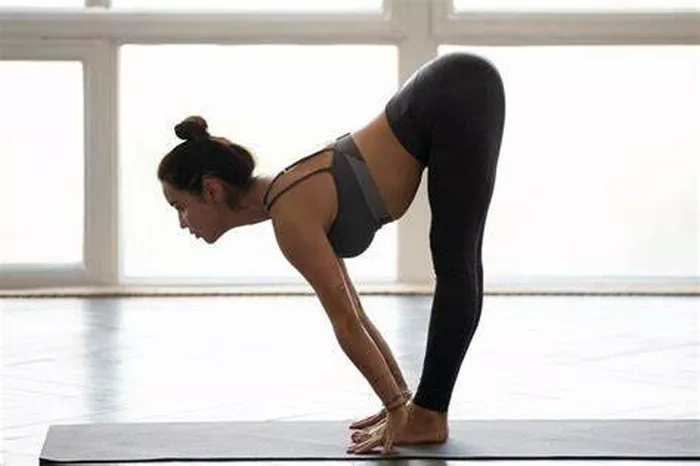Ashtanga yoga is a rigorous and disciplined practice that follows a specific sequence of postures, synchronized with breath control (pranayama) and concentration (dharana). It is rooted in tradition and adheres to specific guidelines that respect the natural rhythms of the body and the universe. One such tradition is the observance of “moon days,” during which practitioners refrain from practicing Ashtanga yoga.
This practice raises an interesting question: Why is Ashtanga yoga not practiced on moon days? To understand this, we must explore the relationship between yoga and lunar cycles, the effects of the moon on the human body, and the philosophical reasoning behind this tradition.
Understanding Moon Days in the Ashtanga Yoga Tradition
In the Ashtanga tradition, “moon days” refer to the full moon and new moon. These days are significant in yogic philosophy and are observed as rest days for practitioners. The tradition of avoiding practice on moon days originates from ancient teachings and is maintained by dedicated Ashtanga yoga practitioners worldwide, including those following the lineage of Sri K. Pattabhi Jois, the founder of modern Ashtanga yoga.
Moon days occur approximately every 14–15 days, meaning there are two moon days each month:
- Full Moon (Purnima) – When the moon is at its brightest and fully illuminated.
- New Moon (Amavasya) – When the moon is completely dark and not visible in the sky.
The Influence of the Moon on the Human Body and Mind
The observance of moon days in Ashtanga yoga is based on the idea that the moon influences human energy, just as it affects natural elements like the tides of the ocean. The human body is composed of approximately 60% water, and yogis believe that the moon’s gravitational pull has a direct effect on our physical and mental states.
- Full Moon Energy: The full moon is believed to amplify energy, making individuals feel more energetic, emotional, or even restless. This heightened energy can increase the risk of injury if one pushes too hard during practice.
- New Moon Energy: The new moon, on the other hand, is associated with lower energy levels, a feeling of heaviness, and introspection. It is considered a time for rest, renewal, and grounding.
Since Ashtanga yoga is a physically demanding practice that requires strength, balance, and focus, practicing on moon days, when energy levels are either too high or too low, is thought to be counterproductive or even risky.
The Connection Between Moon Days and Ayurveda
Ayurveda, the ancient Indian system of medicine, also acknowledges the effects of lunar cycles on the body. According to Ayurveda, the full moon is associated with an increase in the pitta dosha, which governs fire and heat in the body. This can lead to heightened emotions, impatience, or an overactive mind. Conversely, the new moon is linked to kapha dosha, which governs earth and water elements, often leading to sluggishness and lethargy.
From an Ayurvedic perspective, moon days serve as a natural checkpoint for practitioners to rest and align themselves with these cyclical changes, preventing imbalances in energy and health.
The Philosophical and Spiritual Significance of Resting on Moon Days
Yoga is not just a physical practice—it is a holistic discipline that encompasses mind, body, and spirit. Observing moon days as rest days allows practitioners to cultivate mindfulness, honor natural rhythms, and maintain harmony between effort (tapas) and surrender (ishvarapranidhana).
Resting on moon days also encourages practitioners to engage in svadhyaya (self-study) and reflection. Instead of a physically demanding practice, moon days provide an opportunity to focus on meditation, pranayama, or gentle asana, deepening one’s connection to the practice beyond the physical postures.
Scientific Perspective on Rest and Recovery
Modern sports science also supports the idea of scheduled rest days. Overworking the body without proper rest can lead to fatigue, decreased performance, and a higher risk of injury. Moon days serve as built-in rest periods that allow muscles, joints, and the nervous system to recover from the intensity of daily Ashtanga practice.
Moreover, practicing without adequate recovery time can lead to overuse injuries, burnout, and mental exhaustion. By honoring moon days as rest days, practitioners can sustain their practice for a lifetime without unnecessary strain on the body.
Common Misconceptions About Avoiding Practice on Moon Days
“Skipping practice on moon days will disrupt progress.”
On the contrary, structured rest enhances progress by allowing the body to recover and integrate the benefits of practice more effectively.
“Moon days are just superstition.”
While some may see moon days as a purely traditional belief, many practitioners report feeling noticeably different on these days, which aligns with both yogic wisdom and scientific observations about the effects of the lunar cycle.
“I don’t feel different on moon days, so I don’t need to rest.”
The effects of the moon can be subtle and vary from person to person. Even if one does not feel an immediate change, honoring rest days contributes to long-term sustainability in yoga practice.
How to Honor Moon Days as an Ashtanga Practitioner
Engage in Gentle Practices:
Instead of practicing intense asanas, consider meditation, chanting, or yin yoga.
Reflect and Journal:
Use this time for introspection, goal setting, or writing about your yoga journey.
Study Yogic Texts:
Deepen your understanding of yoga philosophy by reading texts like the Yoga Sutras of Patanjali or the Bhagavad Gita.
Prioritize Self-Care:
Get a massage, spend time in nature, or simply allow yourself to rest without guilt.
Conclusion
The tradition of not practicing Ashtanga yoga on moon days is deeply rooted in both yogic philosophy and the understanding of natural cycles. The moon’s influence on human energy, combined with the importance of rest and recovery, makes observing moon days a wise and beneficial practice.
By embracing these built-in rest days, practitioners cultivate a sustainable and balanced yoga practice that honors the rhythms of the body, mind, and nature. Whether viewed through the lens of tradition, Ayurveda, or modern science, the wisdom of moon days serves as a reminder that yoga is not just about effort, but also about harmony and surrender.
Related Topics:

















